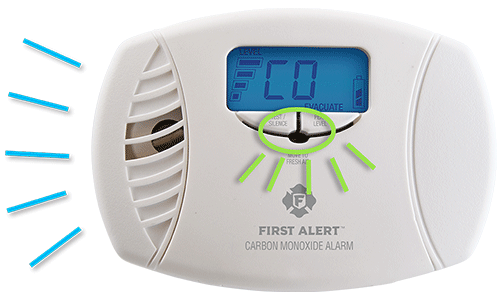The Silent Killer: Carbon Monoxide Awareness
Winter is the deadliest time for carbon monoxide poisoning. Carbon monoxide (CO) is an odorless, colorless, tasteless gas that kills more than 400 Americans every year, according to the Centers for Disease Control and Prevention.
Carbon monoxide is created when carbon-based fuels like gasoline, propane, coal, and wood are burned. If not properly ventilated, carbon monoxide fumes can build up, which, in high concentrations, can be fatal.
CO buildup can come from:
- Faulty furnaces, wood-burning stoves, portable propane stoves, and heaters
- Automobiles left idling in a garage or another enclosed space
- Gas appliances, including furnaces, fireplaces, stove tops, ranges, clothes dryers, hot water heaters, gasoline-powered tools, and generators
There are some simple ways to prevent CO poisoning:
- Install a CO alarm. CO alarms should be replaced at least every 10 years, or as required by the manufacturer, or state and local laws.
- Replace CO alarm batteries. Be sure to inspect CO alarms at least twice a year, replacing batteries (if required), and looking for any signs of tampering.
- Regularly service heating systems. By servicing in-unit heating systems, water heaters, and any other gas, oil, or coal-burning appliances, you can ensure they are working properly and not leaking dangerous carbon monoxide.
- Make sure gas appliances are vented properly. Horizontal vent pipes for appliances, such as a water heater, should go up slightly as they go toward the outside. This prevents CO from leaking if the joints or pipes aren't fitted tightly.
- Educate your residents. Make sure residents know not to use a gas range or oven for heating. It is also dangerous to burn charcoal or use portable gas camping stoves indoors. These items can cause a buildup of carbon monoxide.
If you already have CO alarms, they may be coming to the end of their life. In 2011 and 2012, many states adopted legislation requiring that CO alarms be installed, and these alarms featured sensors with a seven-year life span. After seven years, the alarms will begin to chirp, letting you know a replacement is needed.
More information about carbon monoxide and CO alarms is available in the Carbon Monoxide Alarm Guide.

